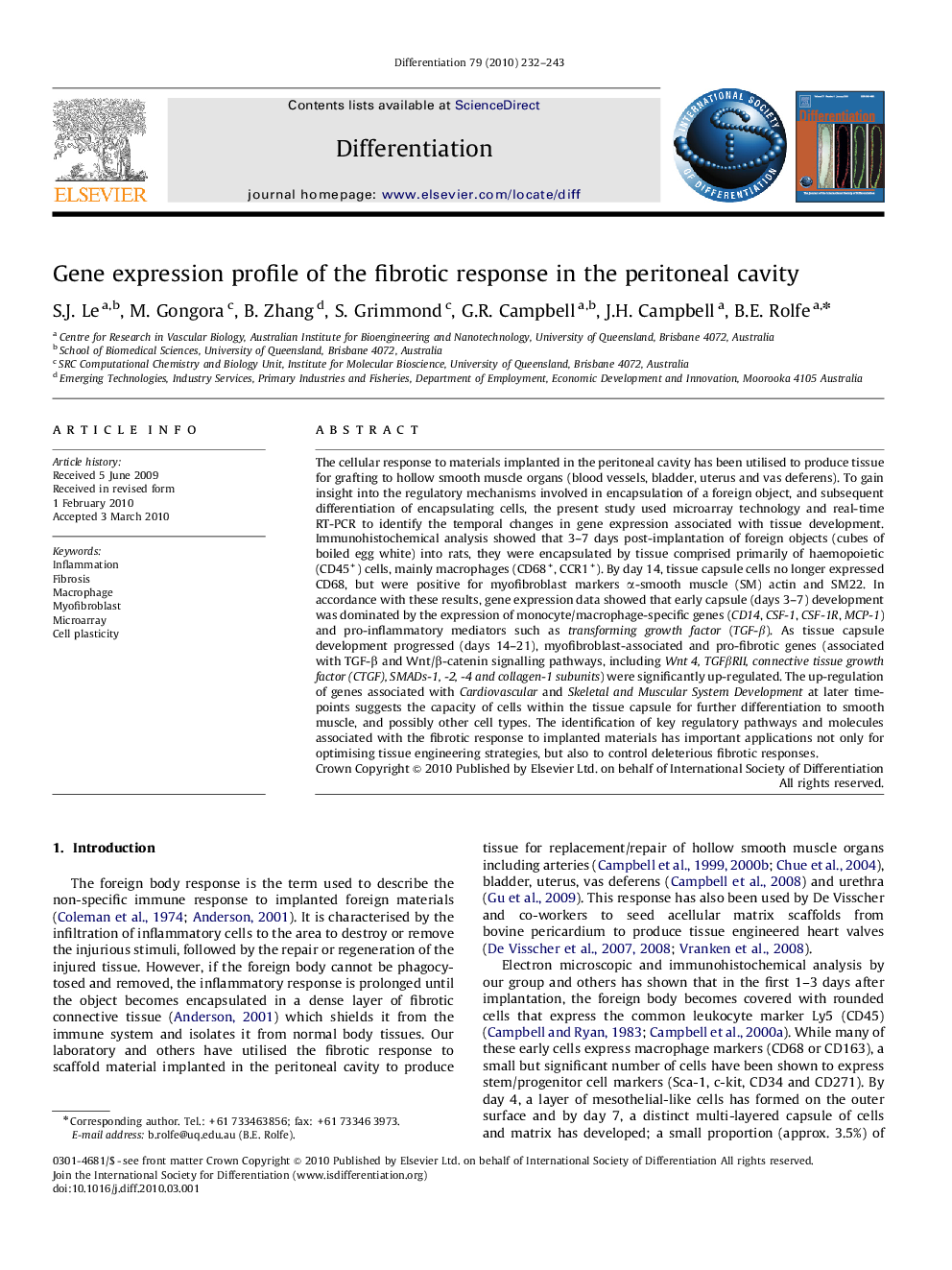| کد مقاله | کد نشریه | سال انتشار | مقاله انگلیسی | نسخه تمام متن |
|---|---|---|---|---|
| 2119625 | 1546805 | 2010 | 12 صفحه PDF | دانلود رایگان |

The cellular response to materials implanted in the peritoneal cavity has been utilised to produce tissue for grafting to hollow smooth muscle organs (blood vessels, bladder, uterus and vas deferens). To gain insight into the regulatory mechanisms involved in encapsulation of a foreign object, and subsequent differentiation of encapsulating cells, the present study used microarray technology and real-time RT-PCR to identify the temporal changes in gene expression associated with tissue development. Immunohistochemical analysis showed that 3–7 days post-implantation of foreign objects (cubes of boiled egg white) into rats, they were encapsulated by tissue comprised primarily of haemopoietic (CD45+) cells, mainly macrophages (CD68+, CCR1+). By day 14, tissue capsule cells no longer expressed CD68, but were positive for myofibroblast markers α-smooth muscle (SM) actin and SM22. In accordance with these results, gene expression data showed that early capsule (days 3–7) development was dominated by the expression of monocyte/macrophage-specific genes (CD14, CSF-1, CSF-1R, MCP-1) and pro-inflammatory mediators such as transforming growth factor (TGF-β). As tissue capsule development progressed (days 14–21), myofibroblast-associated and pro-fibrotic genes (associated with TGF-β and Wnt/β-catenin signalling pathways, including Wnt 4, TGFβRII, connective tissue growth factor (CTGF), SMADs-1, -2, -4 and collagen-1 subunits) were significantly up-regulated. The up-regulation of genes associated with Cardiovascular and Skeletal and Muscular System Development at later time-points suggests the capacity of cells within the tissue capsule for further differentiation to smooth muscle, and possibly other cell types. The identification of key regulatory pathways and molecules associated with the fibrotic response to implanted materials has important applications not only for optimising tissue engineering strategies, but also to control deleterious fibrotic responses.
Journal: Differentiation - Volume 79, Issues 4–5, April–June 2010, Pages 232–243